After reading Ludwig and the Rhinoceros audiences, those young readers who were most likely having it read to them might have some questions, and that’s okay. As a teacher, and as a parent, unless it’s 9:00 and time for them to go to bed, I love questions. However, Ludwig and the Rhinoceros is an illustrated book, a brightly illustrated one at that, about Ludwig, a young boy and his imaginary large mammal friend. Elementary ages have seen books on imaginary friends before, what makes Ludwig and the Rhinoceros so much fun, in addition to feeling like a classic illustrated book that you’ve seen in your youth, is that it takes its talking points from a real-life person.
Ludwig is trying to tell his dad that he’s talking to a rhinoceros in his bedroom. His dad turns around and can’t see anything. As his dad is looking in the closet or under the bed he’s unable to see the rhinoceros that is clearly evident to Ludwig, and people reading the book. The rhinoceros is under the sheets obviously. Now we can see the front perspective of the animal’s head as Ludwig looks down from atop the top. He’s behind the two as dad is looking through their binoculars. It’s a massive, blue animal with a horn that dad was just sitting on, why can’t he see it?
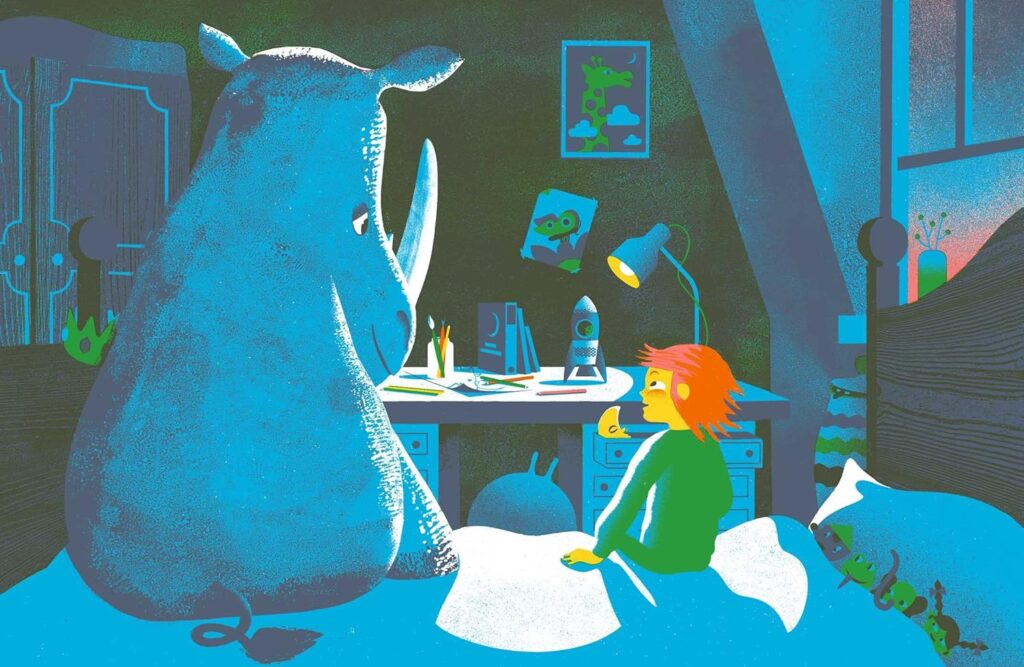
Then the boy points out that moon also can’t be seen. Well that’s because the apartment building is facing the wrong direction now and the moon is on the other side of it. His dad is trying to use logic to satiate the boy so that he’ll simply go to sleep. However, dad’s frustration brings Ludwig to the realization that he’ll be a philosopher when he grows up.
When I initially read the book I accidentally skipped that page where Ludwig realized what he should do when he grows up. Thinking that I was really intelligent, I thought to myself that Ludwig and the Rhinoceros is a brilliant allegory about philosophy. It softly teaches critical thinking, without all of the boring stuff by people with difficult-to-pronounce last names, and does so with minimal words and bright colors. This is the classic children’s illustrated book that I needed when I was a kid.
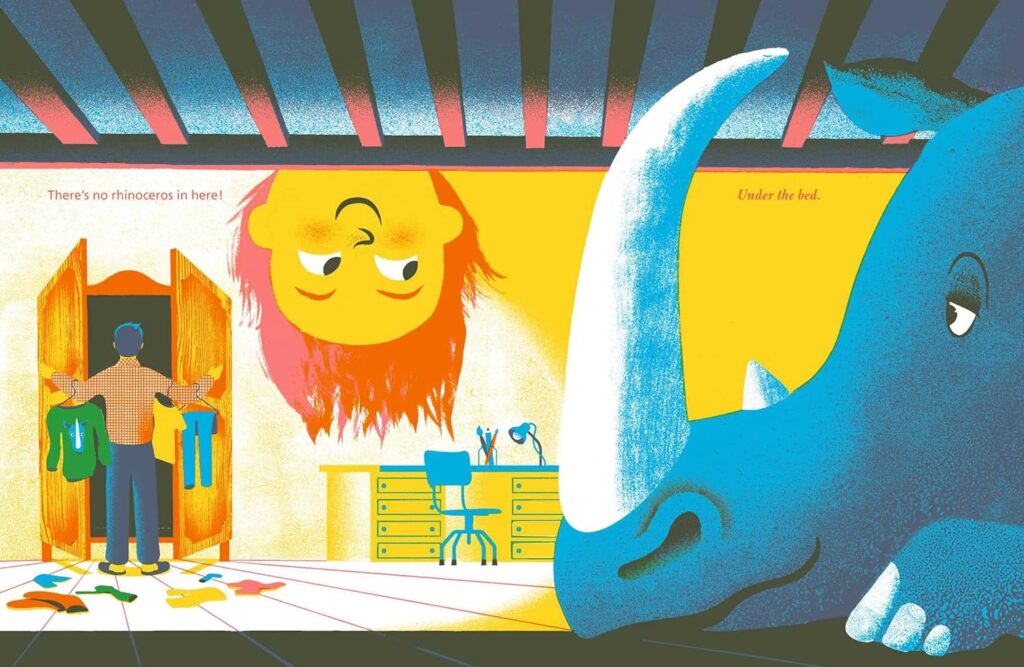
Then I read the book again and saw the page where Ludwig realizes he should be a philosopher. It also helps that the final three pages tell readers that Ludwig is based on Ludwig Wittgenstein….. Perhaps I need to read all of the pages in an illustrated book before forming an opinion on it. I normally do, but the tone, colors and feel of Ludwig and the Rhinoceros gave me the allusion that this was a book that I already knew.
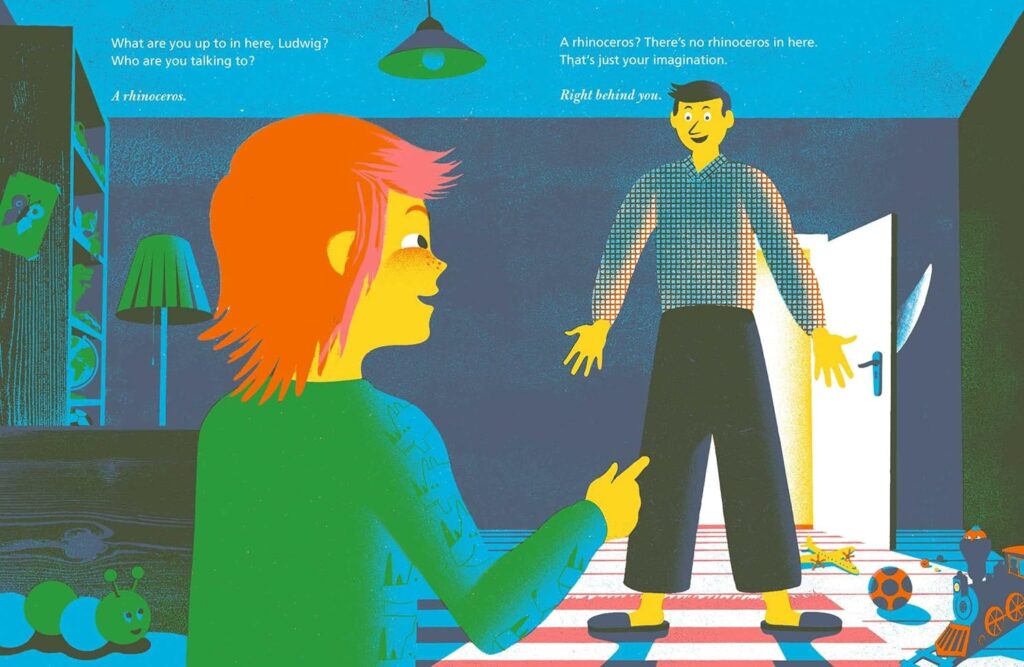
It feels like a book from my childhood. The art deco feel of the illustrations took me back to being a seven-year-old kid in my parent’s house. However, the vantage points of the three characters were jarring, creative, and utterly modern. The toys in Ludwig’s bedroom are classic toys that kids had back in the 70’s, 80’s, 90’s and even today. There are pages that show his room as if you were a bug on the ceiling, looking down at the rhinoceros, dad, and Ludwig. The illustrations intoxicate young readers and the fact that it encourages kids to ask impossible questions is irresistible.
“There is no such thing as a stupid question”, is what some adults would say back in the day. There are many of my teacher friends who still say that. When I say it in class I’ve added the descriptive adjective “relevant” in front of the question. Is there a rhinoceros in the room? Of course, there isn’t, but how can you prove that there isn’t? I had a great conversation with a teacher recently about the lack of critical thinking from students of all ages recently. Without prompting we both commented that aspect of students, or lack thereof, was one of the most frustrating elements of engaging with them in an academic setting.
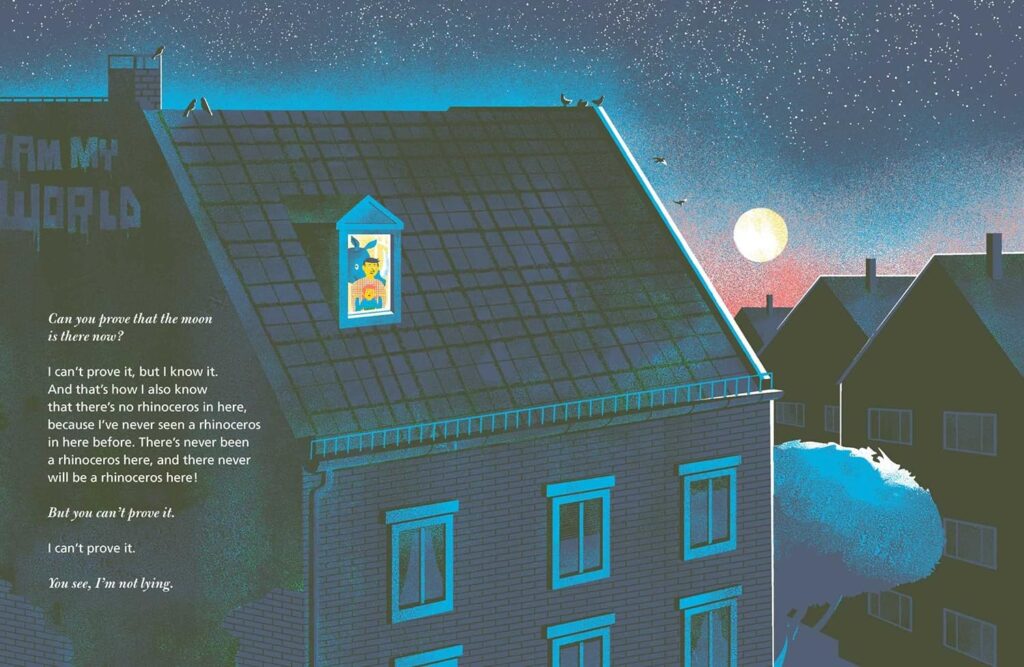
Question everything. At one time that was a mantra of society that was meant as a compliment. However, questioning is an art, and learning to ask better questions, or more relevant questions that are germane to the topic at hand is what kids need help in. Is getting more kids interested in philosophy the answer? That’s a big-picture, theoretical question that is out of my pay grade. Is Ludwig and the Rhinoceros a great illustrated book for children? Oh yeah, this is the sort of illustrated book gold that ages five through nine will love.
They might love it for the graphics. They might love the book for the absurd thought about a rhinoceros being in a child’s bedroom and his father not being able to see it. It’s a multi-colored, neon colors that look like they’re from the distorted time-warp book that their parents love, and that they’re secretly digging too. At one level Ludwig and the Rhinoceros makes you think, however, you don’t have to go to that layer to enjoy it. It’s an illustrated book whose text and images work the way that you expect great books to do, and it does. However, if you peek just a bit behind the curtain you’ll see something else that will make you think and grin just a bit more.
Ludwig and the Rhinoceros is by Noemi Schneider, illustrated by Golden Cosmos, and translated by Marshall Yarbrough, and available on NorthSouth Books.
There are affiliate links in this post.

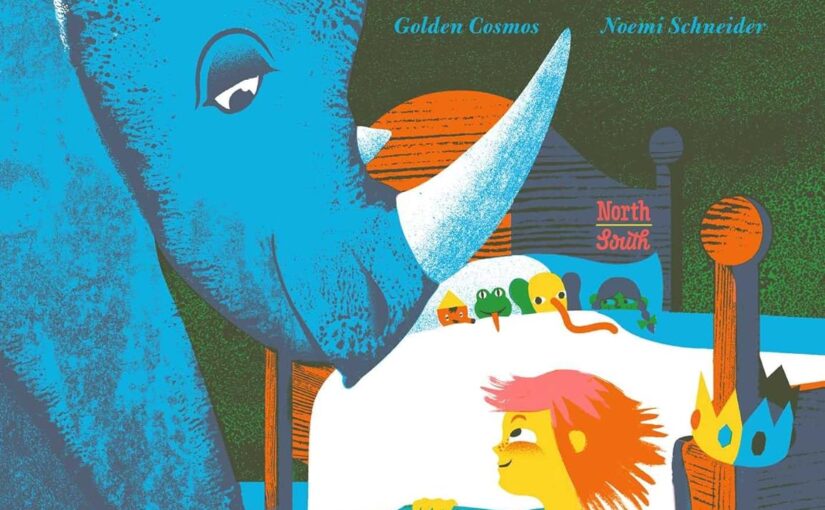
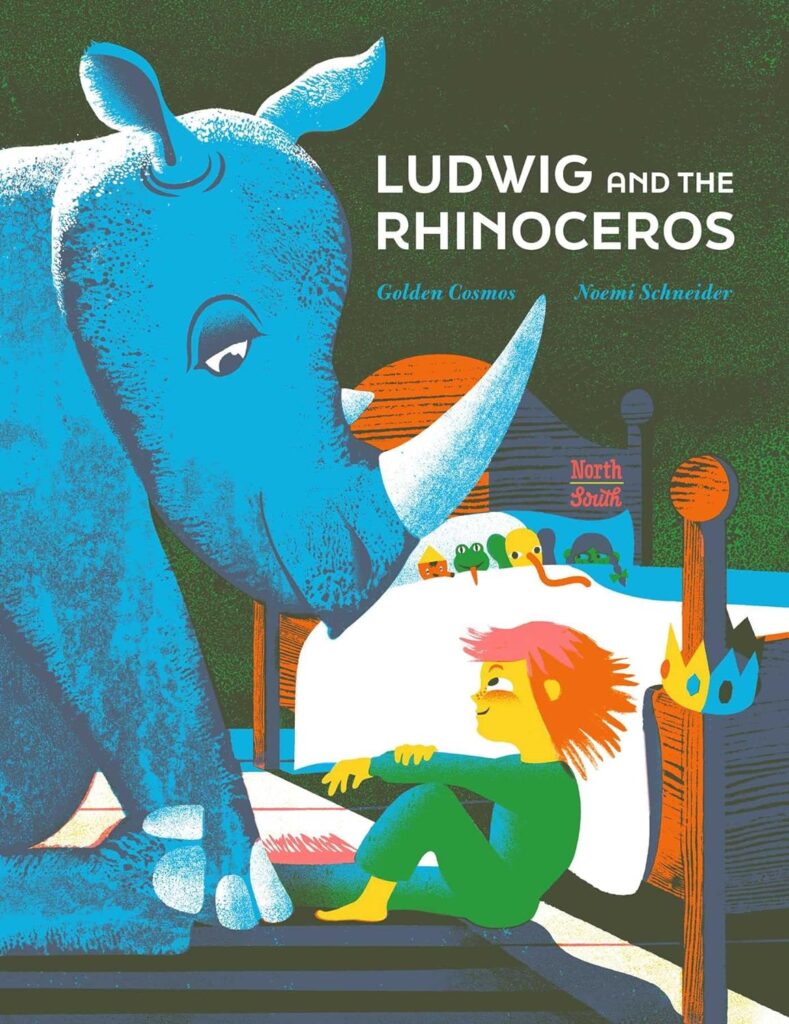



 Facebook
Facebook Twitter
Twitter Flickr
Flickr GooglePlus
GooglePlus Youtube
Youtube